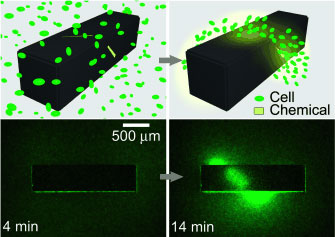 To find our way, we use maps. Cells use "chemical maps" to find the way: they orient themselves by following concentration gradients of attractants or repellants. David H. Gracias and a team at Johns Hopkins University (Baltimore, USA) have now developed a clever new method to produce three-dimensional patterns of chemical concentration gradients in vitro - with previously unattainable versatility and precision in both space and time.
To find our way, we use maps. Cells use "chemical maps" to find the way: they orient themselves by following concentration gradients of attractants or repellants. David H. Gracias and a team at Johns Hopkins University (Baltimore, USA) have now developed a clever new method to produce three-dimensional patterns of chemical concentration gradients in vitro - with previously unattainable versatility and precision in both space and time.
Mar 3rd, 2011
Read more
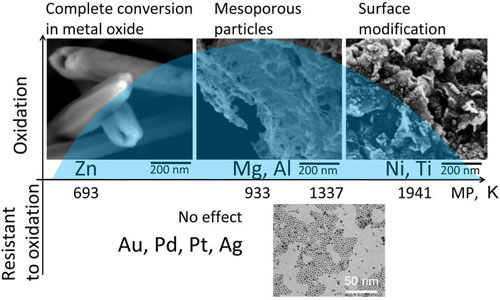 They are corrosion resistant, mechanically strong and withstand exceedingly high temperatures. With such characteristics, porous metals are generating a growing interest in numerous innovative fields of technology. They are characterised by nanostructured surfaces with pores measuring only a few nanometres in diameter. An international research team has successfully developed a heavy-duty and cost-efficient ultrasound procedure for the design and production of such metallic structures.
They are corrosion resistant, mechanically strong and withstand exceedingly high temperatures. With such characteristics, porous metals are generating a growing interest in numerous innovative fields of technology. They are characterised by nanostructured surfaces with pores measuring only a few nanometres in diameter. An international research team has successfully developed a heavy-duty and cost-efficient ultrasound procedure for the design and production of such metallic structures.
Mar 3rd, 2011
Read more
Infectious diseases researchers at Umea University in Sweden are studying the surface properties of bacteria together with materials scientists. Studies of the outermost parts of the cell walls of bacteria yield new information about the chemical composition of structures that are important for the capacity of bacteria to infect organisms.
Mar 3rd, 2011
Read more
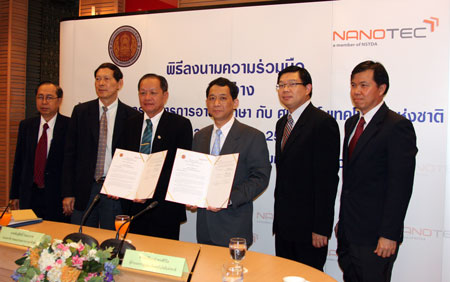 After completing two collaborative training activities, both National Nanotechnology Center (NANOTEC) and Vocational Education Commission (VEC) decided to tie the knot by initiating a formal partnership agreement this afternoon at the Vocational Education Commission's office in Bangkok.
After completing two collaborative training activities, both National Nanotechnology Center (NANOTEC) and Vocational Education Commission (VEC) decided to tie the knot by initiating a formal partnership agreement this afternoon at the Vocational Education Commission's office in Bangkok.
Mar 3rd, 2011
Read more
At the Association for Computing Machinery's 43rd Symposium on Theory of Computing in June, associate professor of computer science Scott Aaronson and his graduate student Alex Arkhipov will present a paper describing an experiment that, if it worked, would offer strong evidence that quantum computers can do things that classical computers can't. Although building the experimental apparatus would be difficult, it shouldn't be as difficult as building a fully functional quantum computer.
Mar 2nd, 2011
Read more
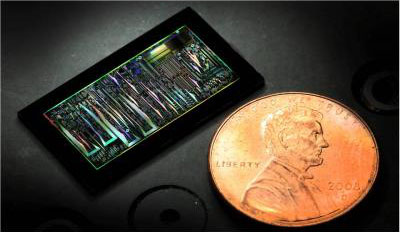 In an effort to make it easier to build inexpensive, next-generation silicon-based electro-optical chips, which allow computers to move information with light and electricity, a University of Washington photonics professor, Dr. Michael Hochberg and his research team are developing design tools and using commercial nanofabrication tools.
In an effort to make it easier to build inexpensive, next-generation silicon-based electro-optical chips, which allow computers to move information with light and electricity, a University of Washington photonics professor, Dr. Michael Hochberg and his research team are developing design tools and using commercial nanofabrication tools.
Mar 2nd, 2011
Read more
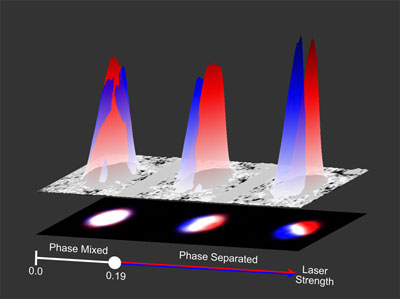 Physicists at the Joint Quantum Institute (JQI), a collaboration of the National Institute of Standards and Technology (NIST) and the University of Maryland-College Park, have for the first time caused a gas of atoms to exhibit an important quantum phenomenon known as spin-orbit coupling. Their technique opens new possibilities for studying and better understanding fundamental physics and has potential applications to quantum computing, next-generation "spintronics" devices and even "atomtronic" devices built from ultracold atoms.
Physicists at the Joint Quantum Institute (JQI), a collaboration of the National Institute of Standards and Technology (NIST) and the University of Maryland-College Park, have for the first time caused a gas of atoms to exhibit an important quantum phenomenon known as spin-orbit coupling. Their technique opens new possibilities for studying and better understanding fundamental physics and has potential applications to quantum computing, next-generation "spintronics" devices and even "atomtronic" devices built from ultracold atoms.
Mar 2nd, 2011
Read more
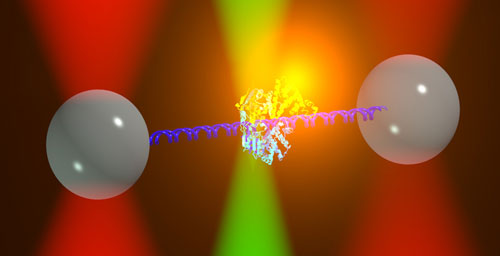 Illinois researchers have combined two molecular imaging technologies to create an instrument with incredible sensitivity that provides new, detailed insight into dynamic molecular processes.
Illinois researchers have combined two molecular imaging technologies to create an instrument with incredible sensitivity that provides new, detailed insight into dynamic molecular processes.
Mar 2nd, 2011
Read more
Nanotechnology exhibits great potential for the food industry. This broad and practically oriented course has therefore been put forward to meet the needs from industries to gain knowledge and understanding about current research going on in this expansive field. It deals with the current and coming applications of nanotechnology in the food industry.
Mar 2nd, 2011
Read more
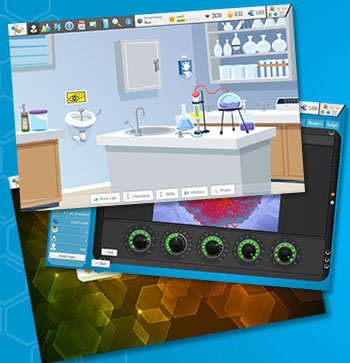 A new strategy browser game - the "Power of research" - is officially launched. Supported by the European Commission, "Power of Research" has been developed to inspire young Europeans to pursue scientific careers and disseminate interesting up-to-date scientific information. Players assume the role of scientists working in a virtual research environment that replicates the situations that scientists have to deal with in the real world.
A new strategy browser game - the "Power of research" - is officially launched. Supported by the European Commission, "Power of Research" has been developed to inspire young Europeans to pursue scientific careers and disseminate interesting up-to-date scientific information. Players assume the role of scientists working in a virtual research environment that replicates the situations that scientists have to deal with in the real world.
Mar 2nd, 2011
Read more
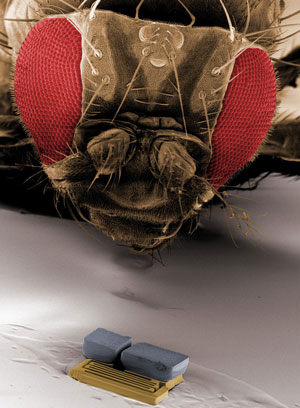 Kleinstroboter, die im Koerper praezise medizinische Eingriffe vornehmen: Ein vom Schweizerischen Nationalfonds (SNF) unterstuetztes Forscherteam entwickelt Prototypen, hat aber auch schon eine konkrete Anwendung am Start.
Kleinstroboter, die im Koerper praezise medizinische Eingriffe vornehmen: Ein vom Schweizerischen Nationalfonds (SNF) unterstuetztes Forscherteam entwickelt Prototypen, hat aber auch schon eine konkrete Anwendung am Start.
Mar 2nd, 2011
Read more
Accuracy of measurement of nanoparticles is a fundamental requirement for research involving smart particles for drug delivery.
Mar 2nd, 2011
Read more
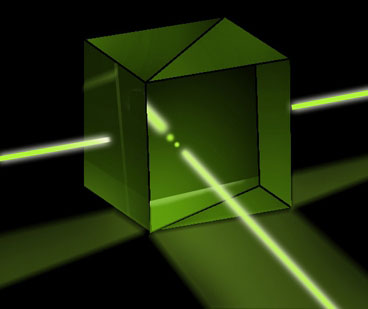 A new experiment would use quantum effects to perform otherwise intractable calculations, but conducting it should be easier than building a quantum computer.
A new experiment would use quantum effects to perform otherwise intractable calculations, but conducting it should be easier than building a quantum computer.
Mar 2nd, 2011
Read more
Researchers from the National Institute of Standards and Technology (NIST) and the Weill Cornell Medical College have designed artificial "protocells" that can lure, entrap and inactivate a class of deadly human viruses - think decoys with teeth.
Mar 2nd, 2011
Read more
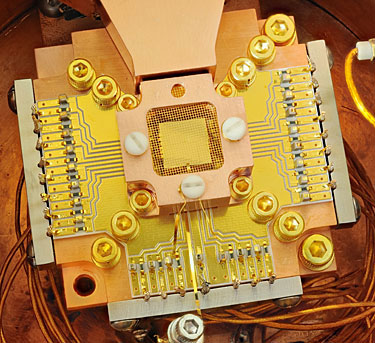 Physicists at the National Institute of Standards and Technology (NIST) have for the first time coaxed two atoms in separate locations to take turns jiggling back and forth while swapping the smallest measurable units of energy. The technique directly links the motions of two physically separated atoms and might simplify information processing in future quantum computers and simulations.
Physicists at the National Institute of Standards and Technology (NIST) have for the first time coaxed two atoms in separate locations to take turns jiggling back and forth while swapping the smallest measurable units of energy. The technique directly links the motions of two physically separated atoms and might simplify information processing in future quantum computers and simulations.
Mar 2nd, 2011
Read more
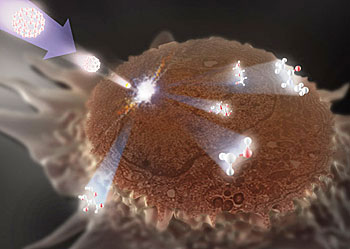 To determine if a tissue biopsy reveals the presence of cancer, a histologist often screens for cells with an abnormal appearance or a specific visible trait such as a larger-than-usual nucleus. However, by the time a cancer is physically noticeable, the disease may be in its later stages and more difficult to treat. In an effort to identify the earlier-onset, more subtle chemical changes occurring in a cell heading toward malignancy, researchers have developed a technique that slices off the top of a cell and makes the structures accessible to spectroscopic examination of their chemical "signature."
To determine if a tissue biopsy reveals the presence of cancer, a histologist often screens for cells with an abnormal appearance or a specific visible trait such as a larger-than-usual nucleus. However, by the time a cancer is physically noticeable, the disease may be in its later stages and more difficult to treat. In an effort to identify the earlier-onset, more subtle chemical changes occurring in a cell heading toward malignancy, researchers have developed a technique that slices off the top of a cell and makes the structures accessible to spectroscopic examination of their chemical "signature."
Mar 2nd, 2011
Read more
 To find our way, we use maps. Cells use "chemical maps" to find the way: they orient themselves by following concentration gradients of attractants or repellants. David H. Gracias and a team at Johns Hopkins University (Baltimore, USA) have now developed a clever new method to produce three-dimensional patterns of chemical concentration gradients in vitro - with previously unattainable versatility and precision in both space and time.
To find our way, we use maps. Cells use "chemical maps" to find the way: they orient themselves by following concentration gradients of attractants or repellants. David H. Gracias and a team at Johns Hopkins University (Baltimore, USA) have now developed a clever new method to produce three-dimensional patterns of chemical concentration gradients in vitro - with previously unattainable versatility and precision in both space and time. 










 Subscribe to our Nanotechnology News feed
Subscribe to our Nanotechnology News feed